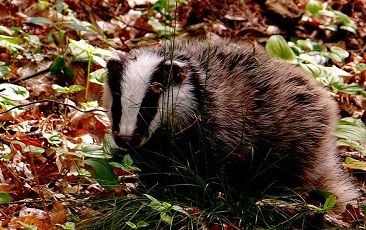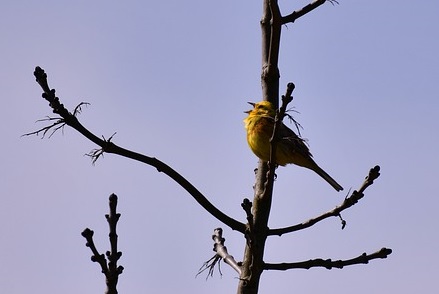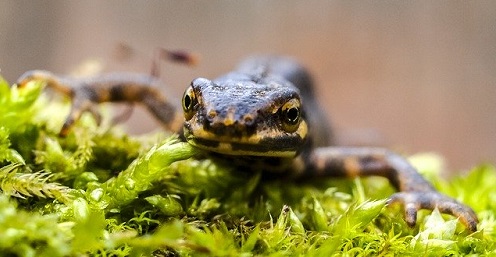Living Planet
Nature · Earth · ClimateNature notes: February 2020
Earth's pulse is quickening ...

It seems to be spring-time in the badger setts - as those emerging from their slumber have been pulling out their old winter bedding and replacing it with fresh leaves and bracken. Elsewhere crumbling mole hills have been rising in the fields and our beds and hedgerows have been slowing pulsing with new shoots and colourful crocuses, with aconites and violets yet to raise their heads. Our older woodland floors will soon be carpeted in green blooms, a nod to the fresh spring white carpets of anemones in months to come, whilst the birds are mellifluously singing and all things have started stirring above, below and within.
With a rise in temperature, there's a perceptible quickening of the blood. Beware all you un-betrothed men who wish to remain so - it's a leap year! Legend has it that it was a fifth century Irish nun (St Brigid of Kildare) who asked St Patrick, the patron saint of Ireland, to grant permission for women to propose marriage after hearing complaints from single women whose suitors were too shy. The leap year tradition was adopted and later taken to Scotland with Queen Margaret passing a law in 1288 adding that any women proposing must wear a red petticoat whilst doing so and any man who declined a proposal would have to pay a fine!
Luckily nature is far more simplistic in its courtship rituals - or is it? It's often the males who flash their bright colours (in birds think peacocks, robins etc) to attract females whose colours are usually more muted in comparison, so they're better camouflaged whilst bringing up their young. But this isn't always the case. And some species just intensify their colours or alter their behaviours or physical attributes solely for the breeding season...

Male Yellowhammers become even more like appealing sunshine, although their yellow head and underparts streaked with brown and black are unmistakable year-round - and the females only have a faint yellow tinge. Although they mate for life and their breeding season doesn't start until April, some of these 'red-listed' birds (populations have declined by over 50% since the mid-1980s) have been vocal around the village since last month, and are easy to see as they gather in flocks in the tops of bare trees and alongside field margins where it's the left-over winter grain crops and stubble that are enabling them to survive, despite their renditions of 'a-little-bit-of-bread-with-no-cheeeeeese'!
When it comes to food, another species has a little trick it uses to entice. I was blessed in January to come across a set of the most delightful tiny footprints, which looked like stars. I discovered they belonged to the front feet of a water-vole, which was heartening because of the repeated flooding over and above the banks of our streams and rivers recently, which must have submerged countless burrows. Did you know a water vole needs to eat 80% of its body weight of food each day to survive? The female water-voles use this to their advantage. From the end of this month they'll be patrolling streams in search of a mate and if a male is reticent, the female will steal his food until he pursues her!

I saw a newt recently at half-light; usually over-wintering under pile of logs or soil, when the air gets warmer they often come out and forage before returning to their hidden spots again. We're lucky enough to have Great Crested Newts in and around the village which have full legal protection in the UK - they are the largest newt species and have been around for an incredible 40 million years. Like frogs and toads, they normally return to the same breeding site every year and it's around about now that the male Great Crested Newts will be growing their jagged crests (along the back and tail) in readiness for their elaborate courtship routine next month. Once he's returned to the pond, the male will wave his crests and 'dances' to impress a female using his impressive tail to first waft his pheromones in her direction and then his sperm, which she takes up, so mating occurs without direct contact. After the mating season has ended, whilst the female has begun laying around 200 eggs, carefully wrapping each one individually inside a different leaf of a pond plant, equally amazingly the great crest of the male becomes re-absorbed back into his body.
As temperatures continue to rise, please keep an eye out on the roads for all those 'leaping' frogs and crawling toads who'll be travelling long distances at night once more to return to their ancestral ponds as there's evidence that they're breeding earlier in the season - and they're often hard to see. Some returning toads can't wait and piggy-back the females just as they're getting near their destination only to have their fires of love cruelly extinguished when they both get squished under passing cars. Please do register any known crossing sites on the Froglife website as soon as possible so you can become eligible for a road warning crossing sign.
And to all the ladies in red petticoats who are unsuccessful in their leap year proposals later this month, remember that life is short and sometimes you may have to kiss a few frogs to find your prince!